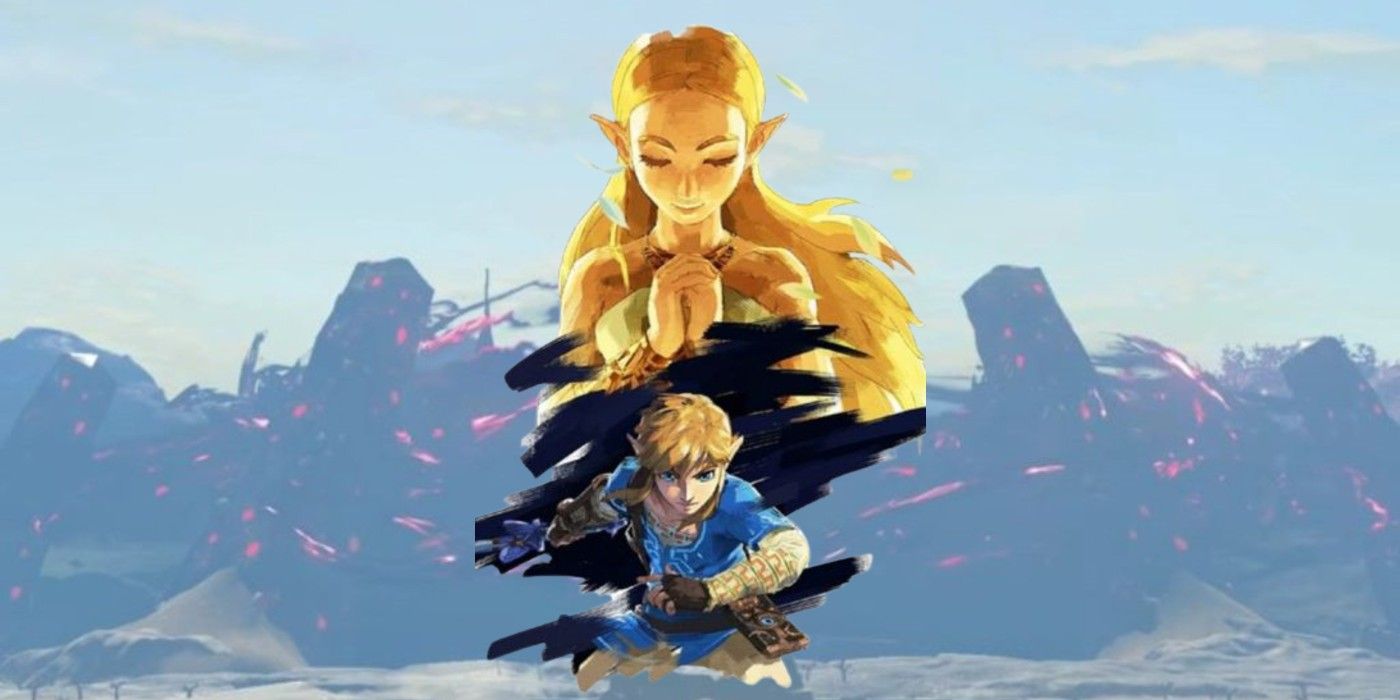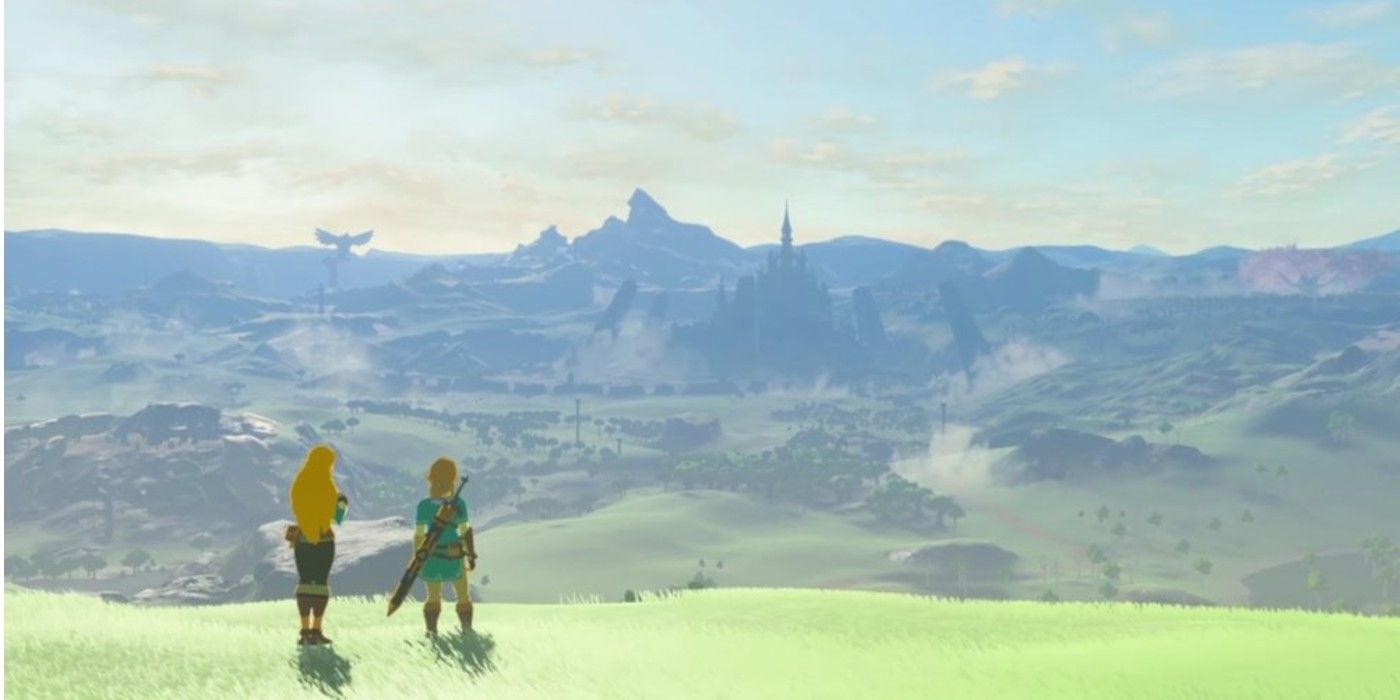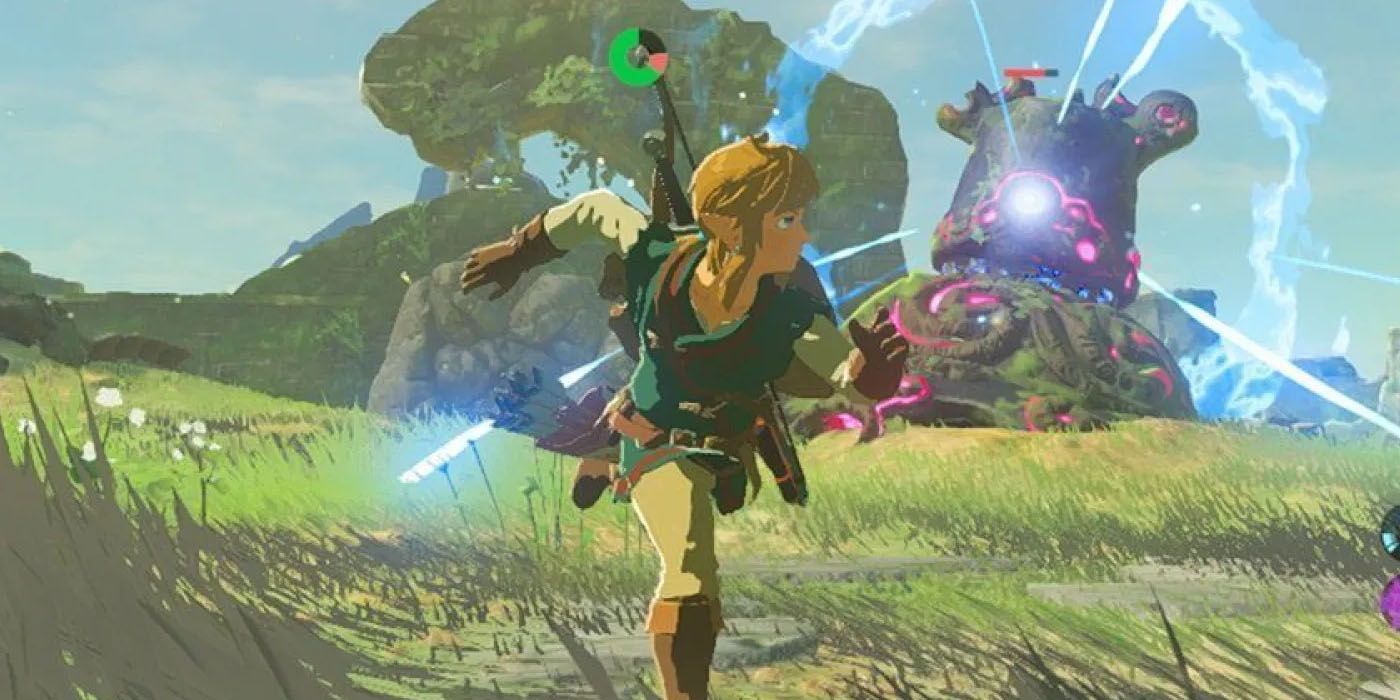Nintendo's 2017 release of The Legend of Zelda: Breath of the Wild not only went on to become one of the most beloved open-world games ever, but it redefined how Nintendo approached its now 35-year-old fantasy series. The series had toyed with the idea of large-scale, nonlinear adventures in the past but nothing quite like Breath of the Wild. The release managed to fuse the puzzler DNA of earlier entries of the series, with the awe-inspiring virtual world of games like The Elder Scrolls V: Skyrim. That was all because of Nintendo's unique development strategies throughout Breath of the Wild's five-year development cycle.
Much like past Zelda installments, Breath of the Wild gave players bare minimum instructions on how to go about tackling the game. Doing so with such a large-scale game is a risk since players might end up completely lost and clueless about what to do next. Nintendo surmounted these potential obstacles by masterfully making the game's exploration as natural as possible.
DidYouKnowGaming? published a YouTube video on March 4 that recounted the novel development techniques that Nintendo used to bring Breath of the Wild's iteration of Hyrule to life. Players might be surprised to learn about the odd but crafty approach the Zelda dev team took to create one of Link's most memorable quests ever. Here are three creative development decisions Nintendo took to piece together Breath of the Wild.
Breath of the Wild: Hyrule Was Based On Kyoto
Nintendo had experimented with open-world game designs in A Link Between Worlds, but nothing as massive as Breath of the Wild's rendition of Hyrule. Despite its extensive size, the game managed to sprinkle just enough enemies, Shrines, Korok Seeds, and other secrets across its vast landscapes to constantly reward players for exploring the map without making exploration stale. Game Director Hidemaro Fujibayashi and his team achieved this harmony by using Kyoto, Japan - the city where Nintendo's headquarters is located - as the framework for Breath of the Wild's environmental pacing.
The team developed a blueprint of Hyrule that was the same size as Kyoto to help wrap their heads around the game's scale. They used mapping software, like Google Earth, to incorporate real-life landmarks in early versions of the game to decide how far apart in-game points of interest should be. Early versions of Breath of the Wild featured actual historical monuments, like the 400-year old Buddhist temple Kiyomizu-Dera and Himeji Castle from Hyogo Japan that used to stand where Hyrule Castle is located now. That's why discovering new places in the game feels so natural, and Hyrule's environments feel alive because Nintendo spaced everything out to resemble a real-world city.
Breath of the Wild: Unorthodox Development Team
Breath of the Wild's development team grew from ten core members to about 300 devs towards the tail end of its creation. Roughly 100 staffers from Xenoblade Chronicles developer Monolith Soft were called on to help finish the game, but Nintendo didn't want the Breath of the Wild team to consist of life-long gamers. Instead, Producers Shigeru Miyamoto and Eiji Aonuma wanted to bring on game designers with a wide scope of interests outside of gaming so they could incorporate fresh ideas into Breath of the Wild, rather than trying to improve on what other open-world games have already done. Aonuma told IGN the kind of unconventional skill set Nintendo wanted from its dev team in a 2019 interview:
"I don't necessarily want to work with someone who's good at playing games. I'd rather work with people who maybe have an interest in climbing mountains or love scuba diving in the ocean. Just someone with very different [skills]. And so maybe by having those skills we can incorporate them into our games."
Climbing turned out to be one of Breath of the Wild's core exploration mechanics. Motorcycle riding almost wasn't included as part of the game but Aonuma, who rides a motorcycle, continued to push for the feature until it was added as a reward for completing the game's last DLC. Scuba diving never made the cut, but there's evidence that Nintendo had plans for underwater exploration. Underwater cave diving is one of Fujibayashi's personal hobbies and players have found detailed coral and underwater life beneath Breath of the Wild lakes and seas. This content that was never featured as gameplay could eventually be added as part of Breath of the Wild 2 seeing how the sequel's trailer shows Link and Zelda exploring the cavernous depths below Hyrule Castle. Nintendo's creative strategy for the first installment of the open-world Zelda series was such a success, it will likely continue to lean into the development techniques that made it shine.
Breath of the Wild: A Unique Approach To Playtesting
On top of ensuring Breath of the Wild's dev team had the advantage of many points of view, Nintendo also brought down the barriers that often drowned out the opinions of newer staff members. From Fujibayashi's perspective, one of the issues that bedeviled the development of 2011's Skyward Sword was the opinions and ideas of younger developers were drowned out by senior staffers. So for Breath of the Wild, he decided to establish a Reddit-like system that would let any team member voice their thoughts anonymously, which the Game Director dubbed "open-air development."
Every three to six months, developers would take a week to play through the entirety of Breath of the Wild. Throughout those playtest periods, any dev could create in-game signs about parts of the game they enjoyed and portions they thought needed work. Other team members could upvote notes they agreed with, so by the end of the week, Fujibayashi knew what parts of Breath of the Wild needed the most attention. The Game Director took his unique approach to playtesting a step further by utilizing a prototype version of Breath of the Wild's Hero's Path Mode to track the in-game actions of each developer.
Fujibayashi essentially used his team like lab rats to see what parts of Hyrule they were dying and losing hearts in most frequently. This allowed the team to tone down the difficulty of certain portions of The Legend of Zelda: Breath of the Wild, like the Sheikah Towers that caused many developers to plummet to their deaths. Nintendo's unorthodox yet innovative development strategies and techniques not only created one of the most memorable open-world adventures ever, but it paved the way for future installments and more franchises that can follow in its footsteps.
Source: YouTube/DidYouknowGaming?, IGN



